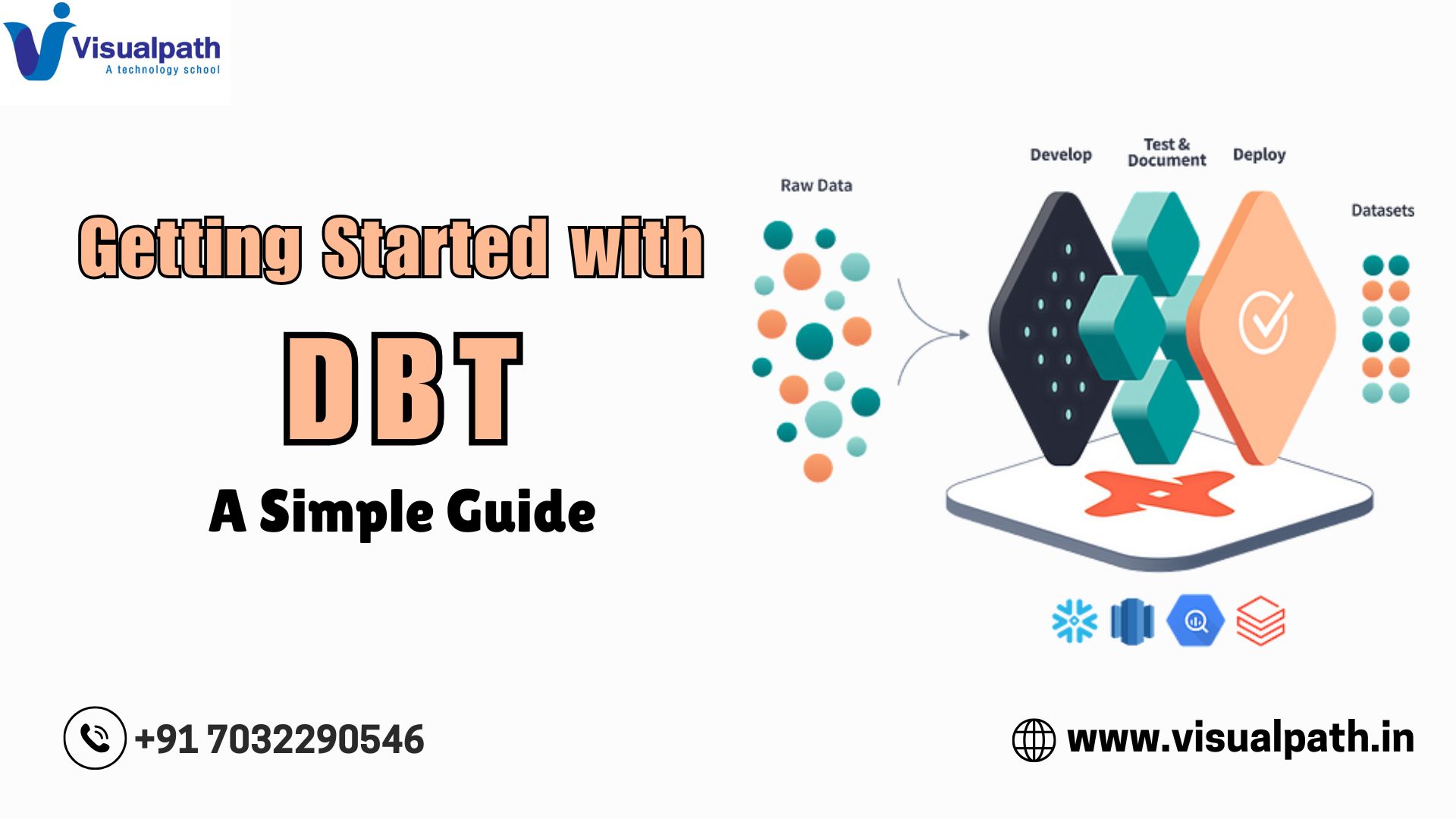Data Build Tool (DBT) has emerged as a transformative solution for data professionals seeking to streamline the process of transforming raw data into actionable insights. By focusing on the transformation phase of data processing, DBT empowers users to create modular, testable, and maintainable data workflows using simple SQL queries. This guide introduces beginners to the fundamentals of DBT, providing a clear pathway to harness its capabilities effectively. Data Build Tool Training
What Is DBT?
DBT is an open-source command-line tool that enables data analysts and engineers to transform data within a data warehouse. Unlike traditional ETL (Extract, Transform, Load) processes, DBT operates on the ELT (Extract, Load, Transform) principle, where data is first loaded into the warehouse and then transformed using SQL. This approach allows for more efficient and scalable data workflows.
Key features of DBT include:
- Modular SQL Models: Users can define transformations as SQL files, promoting reusability and clarity.
- Version Control Integration: DBT integrates seamlessly with version control systems, facilitating collaborative development.
- Automated Testing: Built-in testing capabilities ensure data quality and integrity.
- Documentation Generation: DBT automatically generates documentation for data models, enhancing transparency and understanding.
Why Should Beginners Use DBT?
For those new to data transformation, DBT offers several advantages:
- Simplicity: With a strong foundation in SQL, users can quickly adapt to DBT without the need for extensive programming knowledge.
- Efficiency: DBT automates repetitive tasks, reducing manual effort and the potential for errors.
- Collaboration: Its integration with version control systems fosters teamwork and version tracking.
- Scalability: DBT’s modular approach makes it suitable for projects of varying sizes and complexities.
Getting Started with DBT
Embarking on your DBT journey involves several key steps:
1. Familiarise Yourself with SQL
Since DBT relies heavily on SQL for defining transformations, a solid understanding of SQL is essential. Focus on concepts such as SELECT statements, JOIN operations, aggregations, and filtering. DBT Online Training
2. Set Up Your Environment
Begin by installing DBT on your local machine. The installation process is straightforward and can be completed using package managers like pip. Once installed, configure DBT to connect to your data warehouse by setting up a profiles.yml file with the necessary connection details.
3. Create a New DBT Project
Initialize a new DBT project using the command-line interface. This will generate the necessary directory structure, including folders for models, tests, and configurations.
4. Define Your First Model
Within the models directory, create a new SQL file that defines a transformation. For example, you might write a query to clean and aggregate sales data. DBT will treat this SQL file as a model and execute it to create a corresponding table or view in the data warehouse. DBT Classes Online
5. Run Your Models
Execute your DBT models using the dbt run command. DBT will process the SQL files in the correct order, applying the transformations to the data warehouse.
6. Implement Testing and Documentation
Enhance your models by adding tests to validate data quality and generating documentation to describe the data models. DBT provides built-in functionalities to support these practices.
Best Practices for DBT Projects
To maximize the effectiveness of DBT, consider the following best practices:
- Organize Models Logically: Structure your models in a way that reflects the business logic and data flow.
- Use Version Control: Integrate your DBT project with a version control system to track changes and collaborate with team members.
- Write Clear Documentation: Provide comprehensive descriptions for each model to ensure clarity for current and future users.
- Automate Testing: Implement tests to catch data issues early and maintain high data quality standards.
Conclusion
Data Build Tool offers a powerful yet accessible platform for transforming data within a warehouse. By leveraging SQL and adhering to best practices, beginners can effectively utilize DBT to build robust and maintainable data workflows. As you gain experience, you can explore advanced features such as macros, hooks, and custom materializations to further enhance your data transformation processes.
Trending Courses: Microsoft Fabric, Gcp Ai, Salesforce Data Cloud




